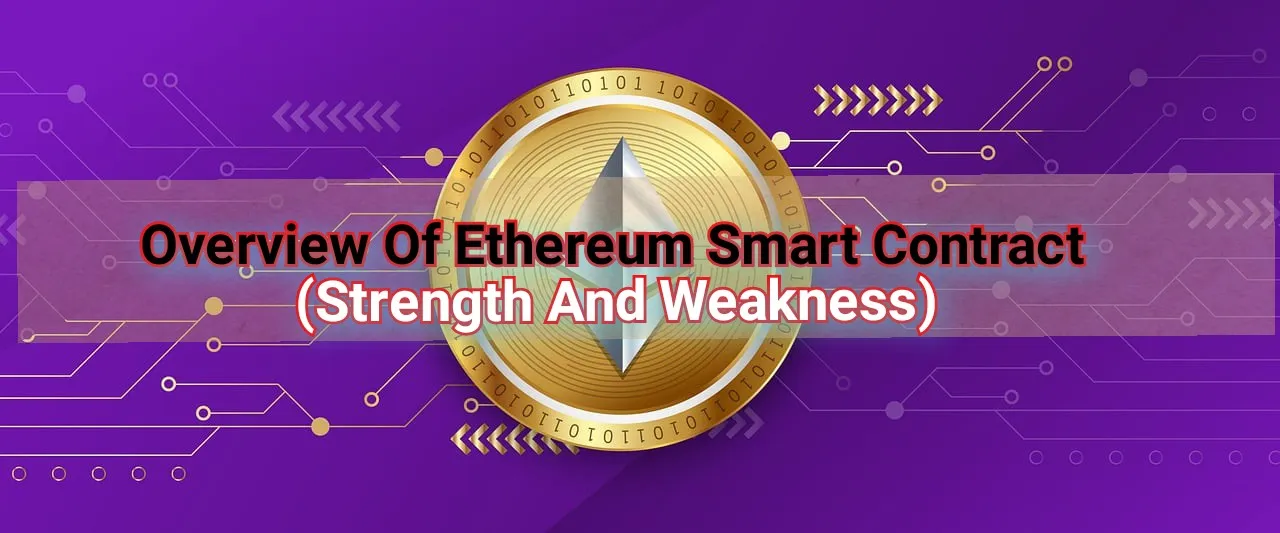
Introduction
Despite being the first successful blockchain network and dominant cryptocurrency, Bitcoin is still limited in function and challenged due to it's consensus mechanisms that involve the activities of miners and inability of incorporating useful decentralized applications.
There's need for more blockchain network with better consensus mechanisms and smart contract that favours decentralization and interoperability. Ethereum with its virtual machines with embedded useful smart contracts create better platform on which several decentralized applications and protocols can be successful launched for better performance.
Ethereum smart contract are self-executing protocol with terms of agreement written as codes and built on the Ethereum networks. These programmable protocols have logic built on Ethereum network and executed by its virtual machine for more unique functionalities.
Key Components Of Ethereum Smart Contract.
Like other smart contract built on latest and newer generation of blockchain networks, Ethereum smart contract are unique and built on Ethereum network but contain two main components. They are:
Code
They are written as codes with logic which defined their functions. Most important programming languages employed for their development are Solidity and Vyper. They are best because they are language which Ethereum network is built upon.
State
Smart contract maintain a state which includes variables that store data. These data include balance, addresses and other useful information which forms the logic, terms of agreement and the outcome. These information in the form of codes are needed for functionalities of the smart contracts.
STRENGTH OF ETHEREUM SMART CONTRACT
The presence of Smart contract built on network especially Ethereum blockchain have positive capabilities on the network. These capabilities and strength include
Decentralization And Automation
Smart contracts automates the functionalities of the network successfully without the aid of intermediaries. With these abilities, time, cost and efficiency are maintained with improved speed. Mistakes and human abnormalities are eliminated to generate better outcome and performance.
Transparency.
The transaction process are visibly accessible and transparent as everyone can inspect the logic and execution built upon the parameters of the smart contracts that aid the functionality of the network.
The transaction are verified and recorded publicly on decentralized ledger on which everyone can assess the outcome and process of the transaction thereby improving its security and transparency of the process.
Security And Immutability
There's an agreement on which the contract built upon and automates the process of the smart contract. With these factors, Once the transaction are processed and verified, the data of the transaction are secured and can't be altered.
The transaction details can't be tampered as they are immutable as they are verified. These transaction details are securely across through the network without being tampered or altered.
Weaknesses Of Ethereum Smart Contract.
Despite offering numerous advantages, Ethereum smart contract have some weaknesses and vulnerabilities which can be exploited for negative purposes. These weaknesses include:
Security And Immutability Vulnerabilities
Smart contracts have prone to bugs which makes them vulnerable and exposed to be used for negative purposes. The network's assets and data can be exploited for significant financial losses.
Smart contracts become immutable or unaltered when deployed successfully which means that any bugs or vulnerabilities noticed after deployment or launching, can't be fixed easily.
Developers are extremely careful when designing the codes and logic of smart contract so that it will be correct, secure and free of errors before deployment.
Gas And Transaction Cost.
Smart contracts execution and prompting are not free but costly which requires ether (Eth) as it's gas fee. The price fluctuations rapidly which dictate the various transactions costs of every tasks across the network. The gas fee is usually high during times of many transactions per second or network congestion. Gas fee is the reason for high transaction costs across the Ethereum blockchain network.
High Energy And Resources Constraints
Prior to the Ethereum 2.0 upgrade, Ethereum's proof of work consensus mechanism is energy intensive which raised the environmental concerns.
Although having better and efficient proof - of-stake and address mechanism, it's energy consumption remains a considerable factor for cryptocurrency and blockchain technology.
Complex smart contract requires high computational complexities and resources to be executed successfully which can affects its performance issues especially when it is required for extensive on-chain computation.
Conclusion
Ethereum Smart contract are self-executing, immutable and transparent programs that operate on a decentralized blockchain networks. They have positive impact which improves the functionalities of the network but with vulnerabilities which can be addressed through research, improved development practices and network upgrades.